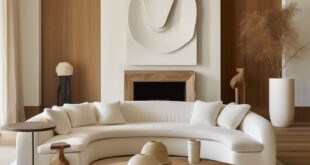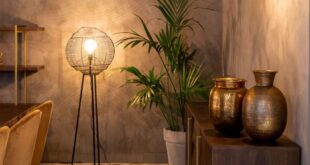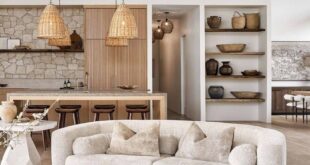Introduction:
Are you looking to breathe new life into your living environment without embarking on a full renovation? You’re in the right place! Our curated list of 24 innovative interior design ideas is here to inspire you with fresh concepts and clever solutions. From clever space-saving strategies to bold color palettes, this collection offers a variety of unique approaches that cater to any style or budget. Whether you’re a design novice eager to experiment or a seasoned decorator seeking the latest trends, you’ll discover actionable tips and creative insights to transform every corner of your space. Prepare to ignite your imagination and elevate your home with these inventive ideas!
Embrace biophilic design for a fresh, nature-infused interior design approach
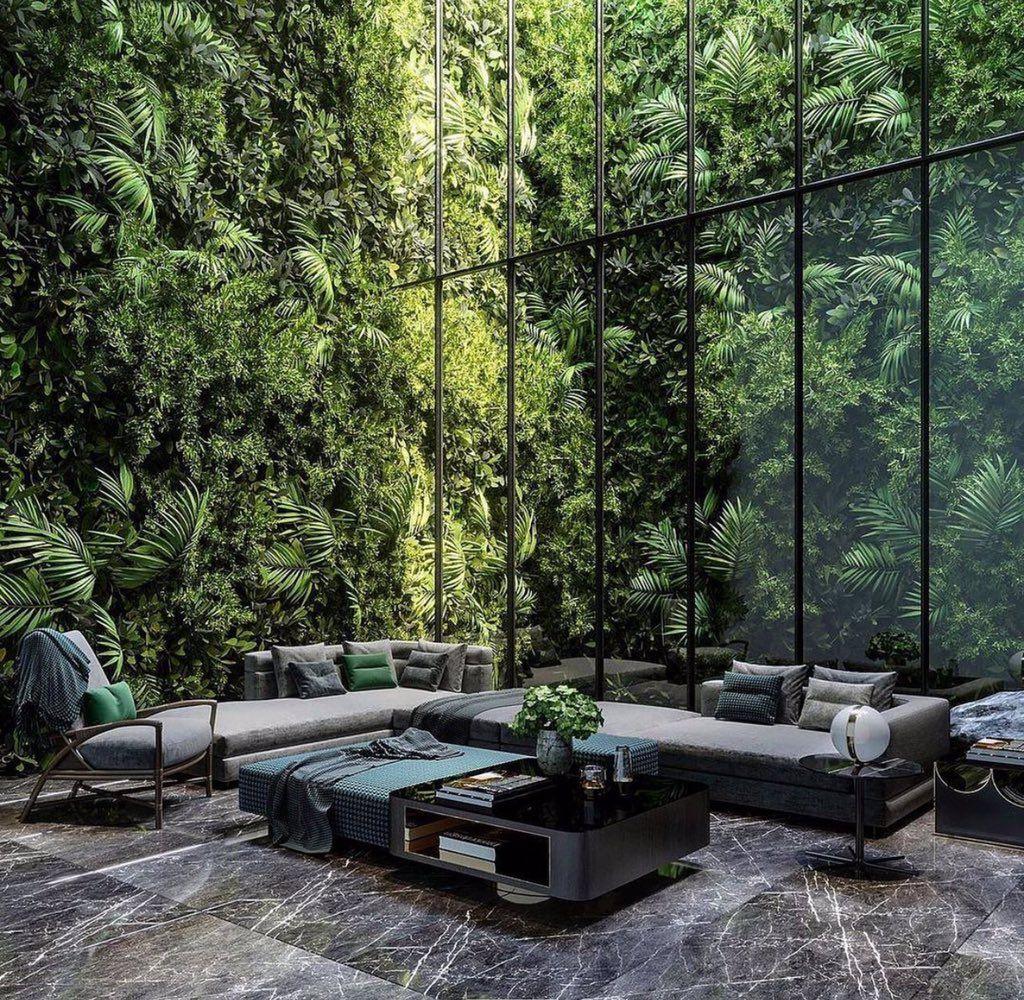
Biophilic design beautifully integrates natural elements into your home, creating a soothing and refreshing atmosphere. Utilize natural materials such as wood, stone, and wool to imbue each room with a sense of the outdoors. Consider large windows that invite ample sunlight and showcase mesmerizing views of your garden, or install a green wall adorned with climbing plants to breathe life into your interior. Even decorative items like nature-inspired art can transform a standard wall into an inviting focal point that resonates with tranquility and organic beauty.
To enhance the effect, introduce water features such as indoor fountains or aquariums that offer a calming auditory backdrop, echoing the serenity of a natural setting. Implement bioluminescent lighting to mimic natural light shifts throughout the day, helping you connect with the rhythm of nature. Incorporate plants throughout your space, focusing on air-purifying varieties such as peace lilies or snake plants that not only elevate aesthetics but also improve indoor air quality. Explore more ways to connect your indoors with the outside world by visiting TreeHugger for insightful tips on sustainable living.
Incorporate multi-functional furniture for flexible, modern interior design solutions
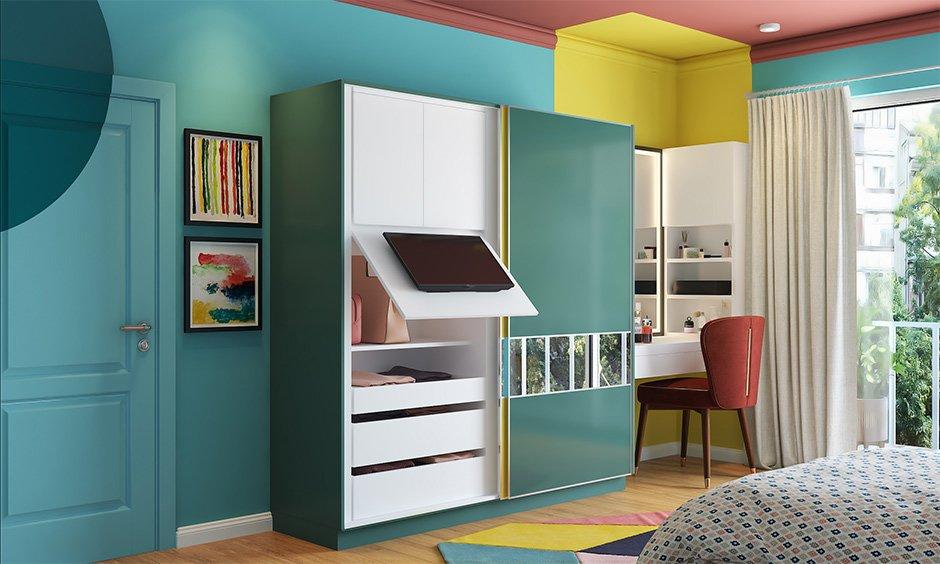
Maximizing space without sacrificing style is essential in modern interior design, and incorporating multi-functional furniture is the perfect solution. Consider investing in sofa beds that provide a cozy seating area by day and a comfortable sleeping space at night. You can also explore nested tables that expand for gatherings and can be neatly tucked away when not in use. Other remarkable options include storage ottomans, which not only serve as footrests or extra seating but also offer hidden compartments for stashing away clutter.
Additionally, a folding dining table can serve as an elegant centerpiece in your dining area while efficiently utilizing space for small apartments. For work-from-home setups, wall-mounted desks provide a sleek workspace that can vanish into the background when you’re done. When it comes to bedroom solutions, Murphy beds can transform a room into a multi-purpose space, seamlessly integrating sleep and functionality. Embracing such furniture design will not only enhance your living area but also contribute to a modern aesthetic that effortlessly adapts to your lifestyle. Discover more tips on this Apartment Therapy website.
Use bold wallpaper to create focal points in your interior design
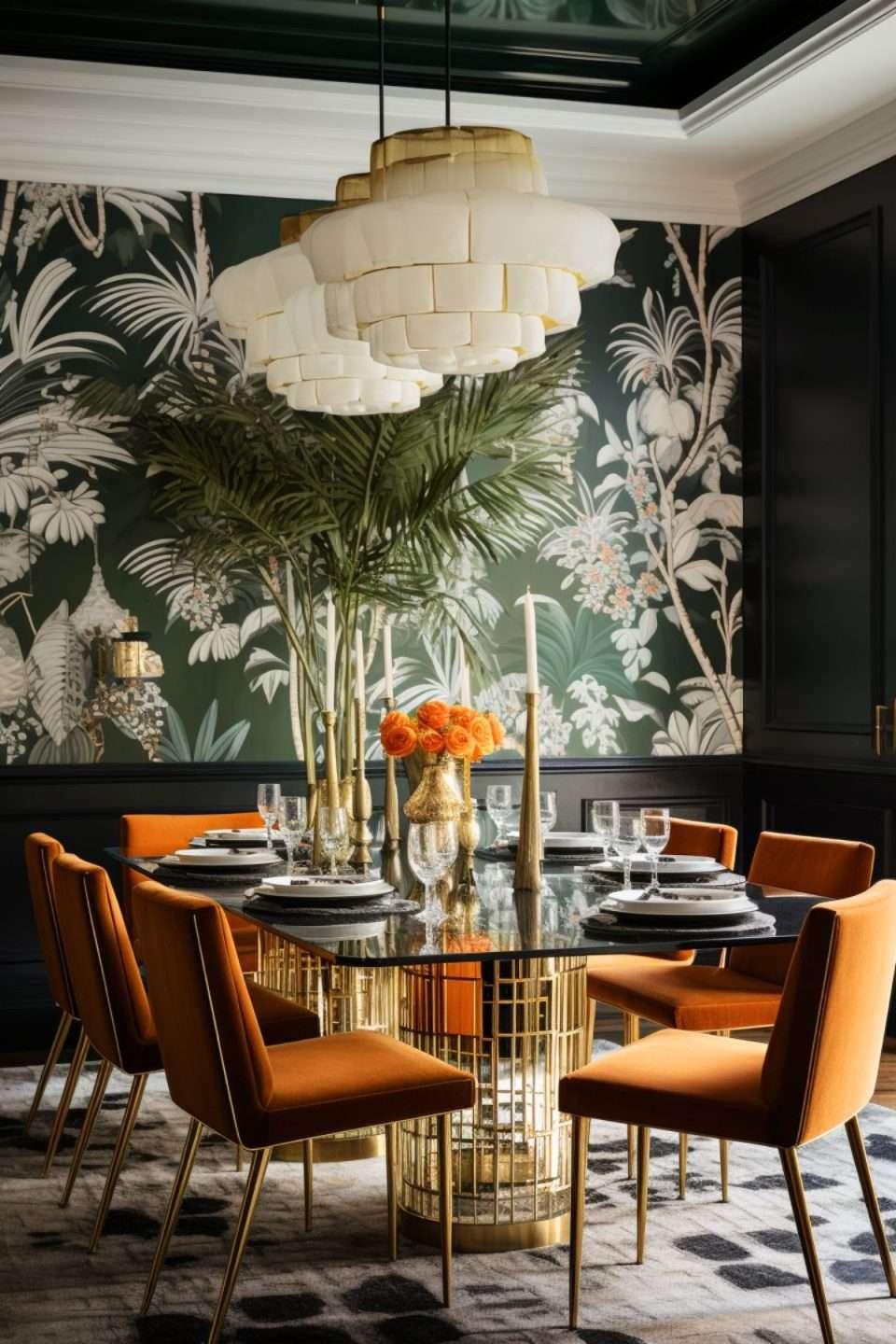
In the realm of interior design, bold wallpaper serves as a captivating medium to curate focal points that not only draw the eye but also convey personality and style. A feature wall adorned with vibrant patterns or rich colors can transform an otherwise mundane space into an extraordinary experience. Choose a wall that naturally attracts attention, such as the one behind a sofa or bed. Instead of coloring every wall, opt for a striking wallpaper that makes a statement, letting your furnishings and decor harmonize around it. Play with textures and designs to elevate visual interest and bring depth to the room.
When selecting bold wallpaper, consider the theme and mood you wish to establish. From geometric patterns that evoke a modern vibe to floral designs bringing a hint of vintage charm, there’s a world of options available. Here’s a quick guide to popular wallpaper styles:
| Style | Description |
|---|---|
| Geometric | Sharp lines and angles create a contemporary look. |
| Floral | Classic designs that add warmth and nostalgia. |
| Textured | Materials like grasscloth or metallic finishes add depth. |
| Abstract | Unique, artistic prints that spark conversation. |
Consider mixing different styles and colors for a more eclectic look, or pair bold patterns with more subdued decor to keep the focus on the wallpaper. For additional inspiration and ideas, check out House Beautiful for creative uses of wallpaper in various settings.
Experiment with asymmetrical layouts for a dynamic interior design touch

Breaking away from traditional symmetrical designs can breathe new life into your interior spaces. Asymmetrical layouts not only evoke a sense of movement and fluidity, but they also make your design more engaging. Consider using furniture pieces of varying heights and sizes to create visual interest. A tall bookshelf paired with a sleek, low-profile sofa can create a compelling contrast, while an arrangement of artwork or decorative objects that play off of one another without mirroring can add a dynamic touch. Experiment with placing accessories and plants at different levels to play up the organic feel of your space.
To effectively implement this design approach, try combining different shapes and materials in your furniture selections. For instance, you could mix a round coffee table with angular armchairs, resulting in an inviting yet unexpected gathering spot. Accent walls can also contribute to an asymmetrical effect; consider painting one wall in a bold color or applying patterned wallpaper that draws the eye and creates an anchor in the room. Using built-in shelving or open cubbies can further enhance the asymmetrical look, allowing you to balance out displayed items gourgeously. For more inspiration on managing these layouts, visit houzz.com.
Play with textures—combine smooth, rough, and soft elements in interior design
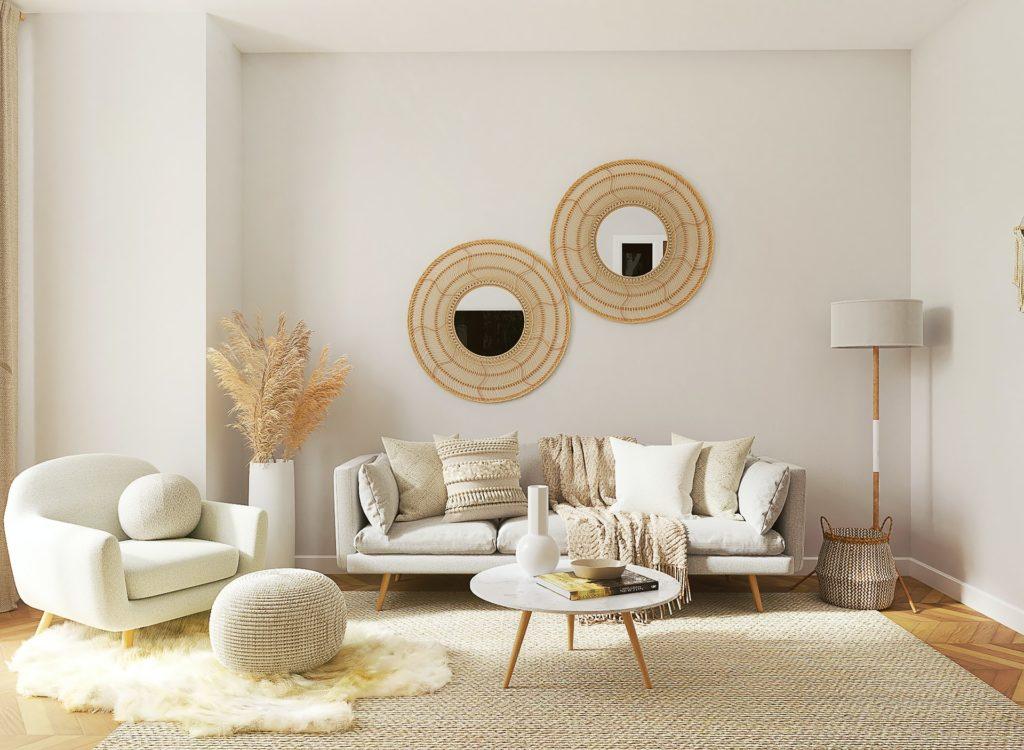
Texture is a powerful tool that can elevate your interior design game by adding depth and interest to your spaces. Start by mixing smooth elements like polished marble or glass surfaces with rough materials such as exposed brick or reclaimed wood. This contrast not only draws the eye but also creates a tactile experience that invites touch, making the space feel more inviting. For instance, consider incorporating a sleek glass coffee table paired with a rustic wooden sideboard, or use a soft velvet sofa against a stone wall. The interplay of these different textures can transform a room from mundane to extraordinary.
To enhance the sensory experience, add soft elements into the mix. Think plush cushions, fluffy rugs, and cozy throw blankets that soften hard surfaces. Group textures together in layers for even greater impact. For example, a knitted throw over a smooth leather chair or adding a soft rug beneath a metal coffee table creates a harmonious balance. For a stunning visual display, use color and texture to define spaces—pair vibrant, luxurious fabrics like silk or chenille in a reading nook with rugged wood shelves or a fabric wall feature. Embracing a variety of textures not only enriches your design but also fosters a unique ambiance that reflects your personality. Explore more about combining textures at architecturaldigest.com.
Integrate smart home technology within your innovative interior design ideas
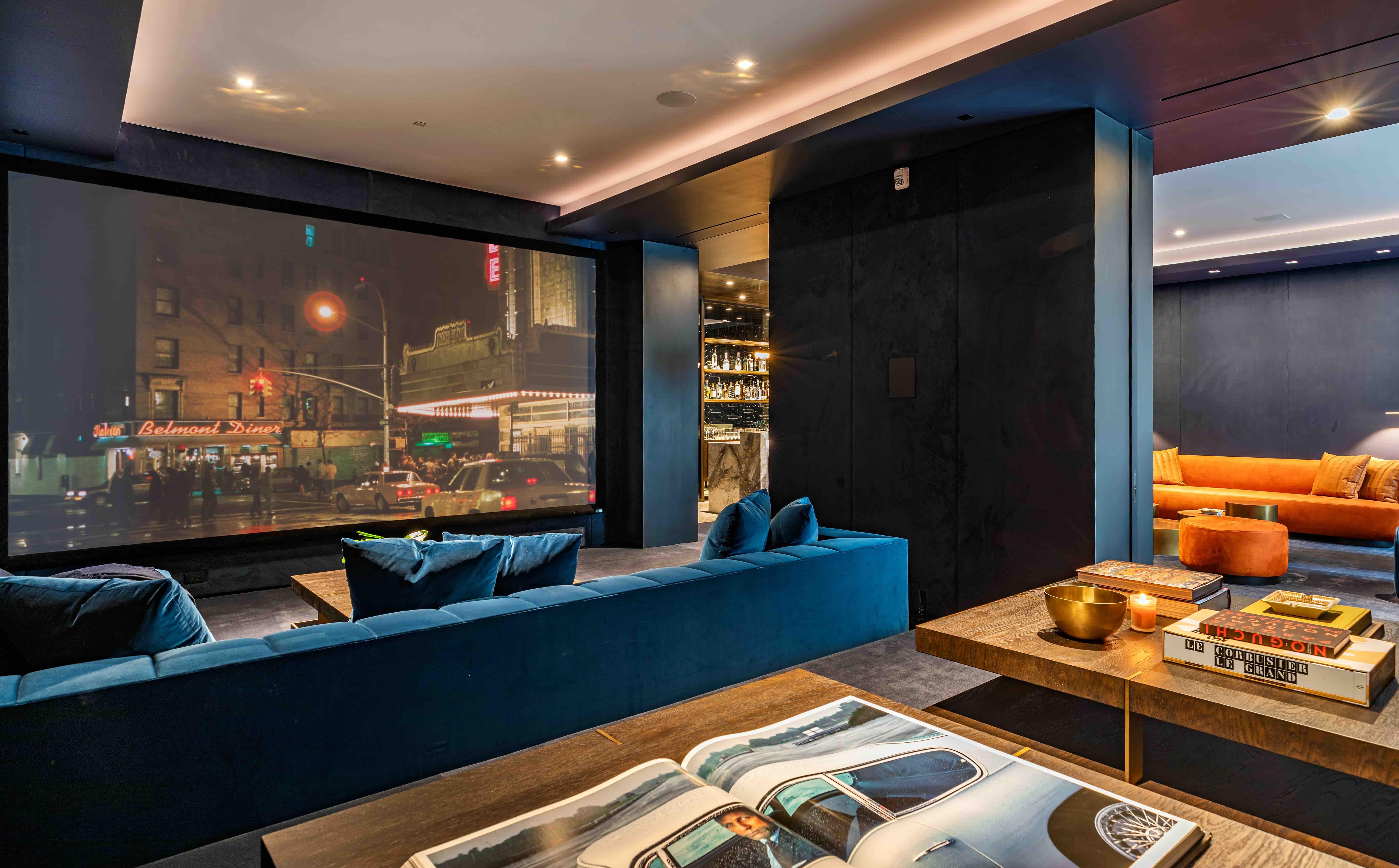
Enhancing your interior design with smart home technology not only adds convenience, but also elevates the aesthetic appeal of your space. Imagine a living room where the lighting adjusts automatically according to the time of day, accentuating the rich textures of your furnishings. Incorporate smart lighting systems that allow you to customize color and intensity to complement your decor. You can also explore smart thermostats that blend seamlessly with your interior, providing a sleek interface while optimizing energy efficiency. Adding automated shades in fabrics that match your design palette can enhance privacy and control natural light, creating mood effortlessly.
Moreover, consider integrating smart speakers and voice assistants within your design. These devices can be subtly incorporated into bookcases or behind decorative elements, allowing you to enjoy a stylish environment without sacrificing technological convenience. Create an interactive room, where digital frames display art and personal photos, changing with your mood or the season. Look into home security systems that not only protect your space but also add to its modern charm; for instance, stylish doorbells with cameras that seamlessly fit within your exterior aesthetics. For more extensive integration ideas, check out smarthome.com for the latest innovations.
Opt for oversized art pieces to amplify interior design impact
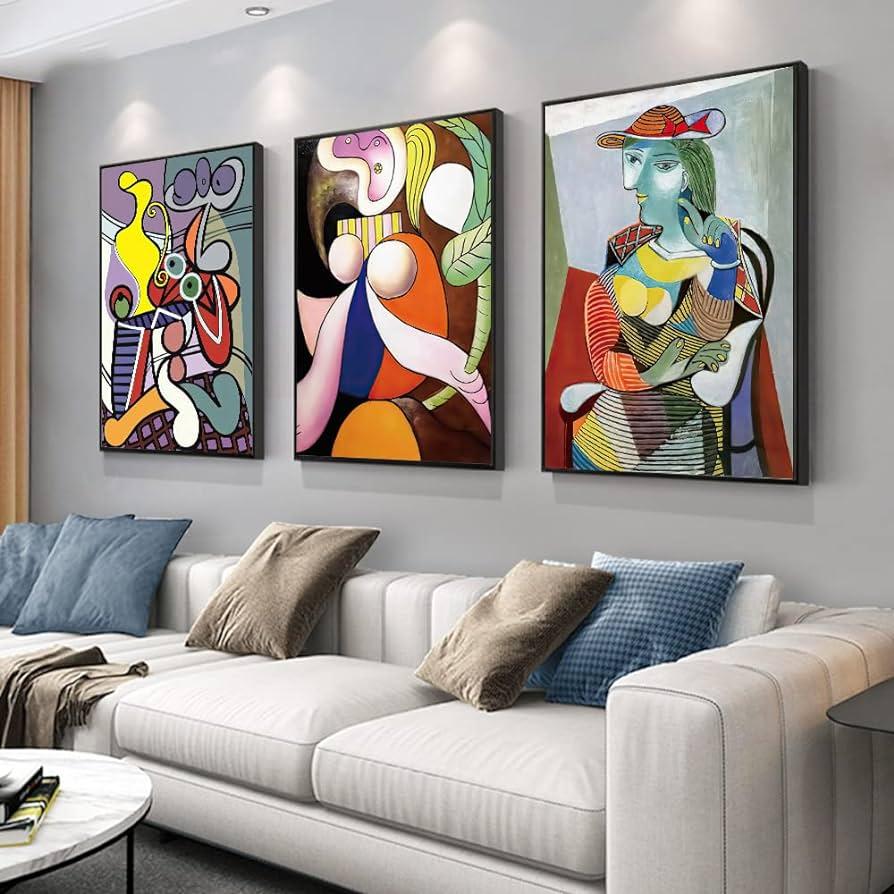
In interior design, the scale of an artwork can dramatically influence the ambiance of a room. Embracing oversized art pieces not only serves as a stunning focal point but can also evoke emotions and conversations. Consider incorporating dramatic canvases, bold murals, or massive framed photographs that resonate with your personal style while adding a touch of elegance to the space. These large pieces can serve multiple purposes: they can enhance the perception of space, create a theme, and even elevate the functionality of a room by pulling together design elements.
When selecting oversized art, think about the following tips to maximize impact:
- Contrast Counts: Pair large artworks with minimalist furniture to create an eye-catching interplay.
- Color Coordination: Choose pieces that complement your existing color palette or introduce a daring contrast.
- Placement Matters: Hang art at eye level and ensure it offers the right balance with other decor items.
Explore various materials and textures; from textured canvases to metal sculptures, the possibilities are endless. Utilizing oversized art can transform an ordinary space into a captivating environment that speaks volumes without saying a word. For inspiration, check out Houzz where you can find a plethora of oversized art ideas and installation tips.
Curate a color palette that transforms mood in your interior design
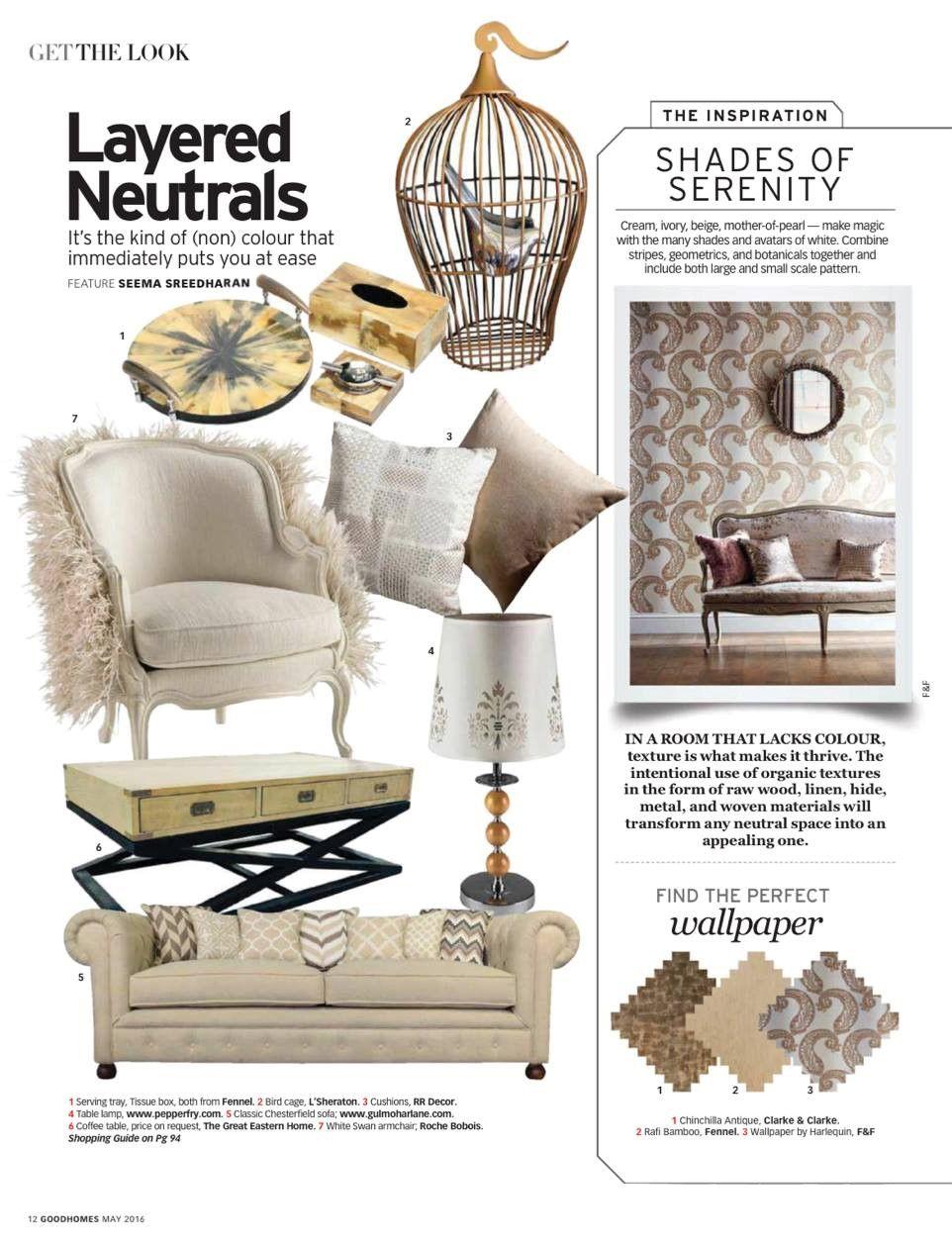
Creating a harmonious color palette is essential in setting the tone for any interior space. Warm colors such as reds, oranges, and yellows can energize a room and evoke feelings of warmth and coziness, making them perfect for social areas like living rooms or kitchens. On the other hand, cool colors like blues and greens promote a sense of calmness and serenity, ideal for bedrooms and bathrooms. To enhance the emotional impact, consider incorporating neutral tones as background shades; they provide balance, making the bolder colors pop without overwhelming the senses.
When selecting your colors, think about the atmosphere you want to create. Experiment with shades of the same color for a monochromatic scheme that enhances depth and sophistication. Alternatively, a complementary color scheme can invigorate your space, as seen in the vibrant pairing of teal with coral. To visualize your selections, use digital tools to create a mood board showcasing your ideas. Check out platforms like Canva that allow you to play with different palettes before committing. Below is a simple color palette guide:
| Color Type | Example Shades | Mood Effect |
|---|---|---|
| Warm Colors | Red, Orange, Yellow | Energetic, Inviting |
| Cool Colors | Blue, Green | Calming, Peaceful |
| Neutral Colors | Gray, Beige, White | Balanced, Versatile |
By employing these color strategies, you can effectively transform your space while reflecting your personal style. Don’t hesitate to experiment with various shades and combinations until you find the palette that resonates with your vision. For insight into color psychology and its impact on mood, explore resources like Color Psychology, which delves into how different hues influence our emotions and behaviors.
Create cozy nooks with layered textiles for inviting interior design spaces
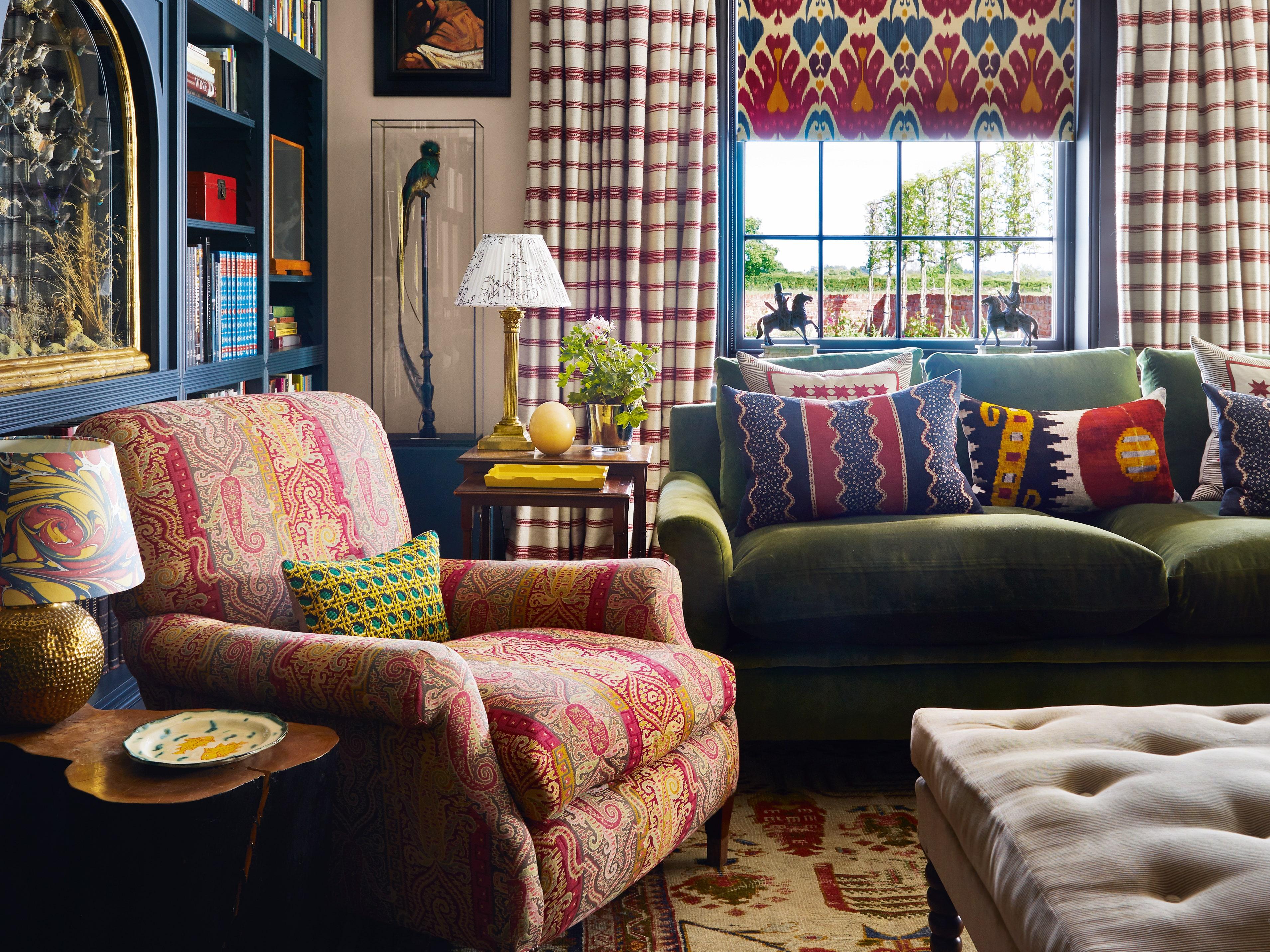
Transform your living spaces into warm and inviting havens by incorporating layered textiles that evoke comfort and style. Start by using a combination of throws, pillows, and area rugs to create a multi-dimensional effect. Choose a variety of fabrics such as soft wool, luxurious velvet, and breathable cotton in a cohesive color palette. This blend not only adds depth but also enhances tactile comfort. Consider arranging floor cushions around a low table for a casual hangout area, or draping a textured throw over the back of a chair to add an element of warmth and personalization.
For an eclectic twist, mix and match different patterns and textures. Think geometric prints, florals, and stripes—all interwoven to celebrate uniqueness. Using different weaving techniques, such as tufting and knitting, can also contribute to the overall aesthetic and feel of the nook. To encourage relaxation, incorporate dim lighting options, like soft string lights or table lamps with warm-toned bulbs, to enhance the intimate ambiance. By thoughtfully combining these elements, you can effortlessly craft a cozy space that invites you and your guests to unwind. For additional inspiration on textile layering, visit elledecor.com.
Utilize mirrors strategically to expand and brighten your interior design
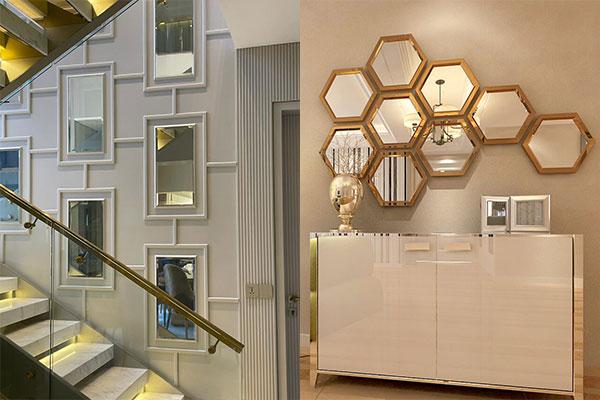
- Maximize Natural Light: Position mirrors across from windows to reflect sunlight throughout the room. This will not only brighten the space but also create an illusion of a larger, airier environment. Consider oversized mirrors that can serve as statement pieces while enhancing the overall aesthetic.
- Layering with Style: Incorporate various mirror shapes and sizes in a gallery wall for a touch of eclectic elegance. This not only adds depth to your decor but also plays with reflections, creating intrigue and dynamic visual interest across the room.
| Mirror Types | Best Uses |
|---|---|
| Floor Mirrors | Ideal for full-body reflections; great for dressing areas. |
| Wall Mirrors | Perfect for enhancing wall decor and reflecting light. |
| Decorative Mirrors | Great for adding personality and focal points in a room. |
For more creative mirror ideas, check out House Beautiful for inspiration.
Mix vintage and contemporary pieces for eclectic interior design styles
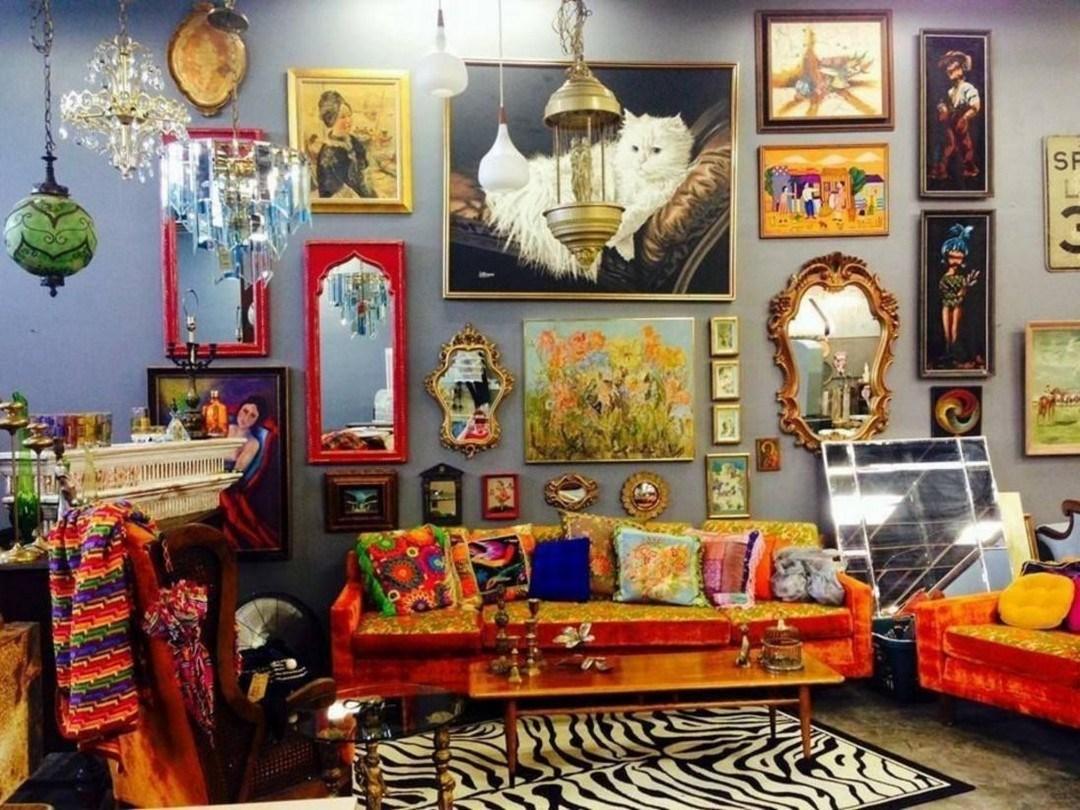
Blending vintage and contemporary elements creates a unique charm in any space, offering a narrative that transcends time. Classic furniture pieces, such as a mid-century modern chair paired with a sleek, contemporary coffee table, can cultivate a sophisticated atmosphere. Consider showcasing a vintage rug beneath a minimalist glass dining table to anchor the room while adding warmth through texture. Accent walls adorned with retro artwork can serve as striking focal points, drawing the eye without overwhelming the senses. The key is to create balance: combine sleek lines and bold colors from modern pieces with the detailed craftsmanship found in vintage selections.
Functionality is equally important; while aesthetics reign supreme, ensure each item serves its purpose. Utilize a vintage bar cart to display contemporary glassware for a functional yet stylish statement. Layering different textures—like a plush, vintage velvet sofa against smooth, modern furniture—introduces depth, while mirrors can help amplify the eclectic vibe by reflecting the mix of styles. Remember, incorporating pieces that tell a story—whether a mid-century lamp or a contemporary sculpture—can truly personalize your space. For inspiration on combinations of styles, visit Apartment Therapy for endless creative ideas.
Incorporate statement lighting features for striking interior design effects
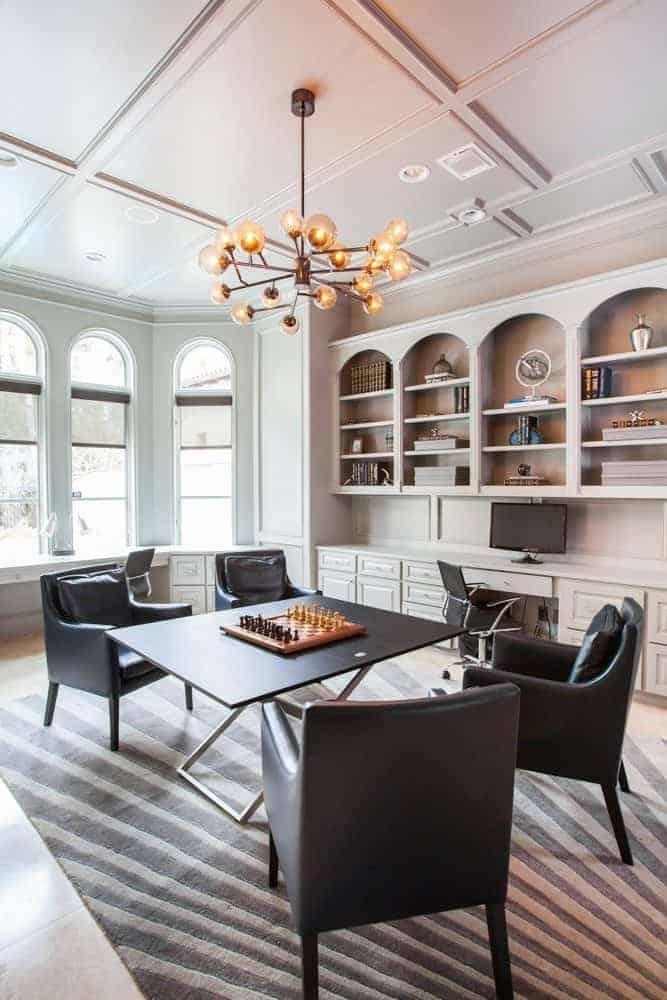
- Bold Chandelier Centerpieces: A grand chandelier can transform an ordinary room into a luxurious space. Consider oversized designs that draw the eye upward and create a sense of grandeur, particularly in open-concept living areas.
- Sculptural Wall Sconces: Replace traditional wall art with sculptural sconces that serve as functional art pieces. These can illuminate the walls beautifully while adding texture and dimension.
- Unexpected Floor Lamps: Look for floor lamps with unique shapes or materials. A vintage tripod lamp or a modern geometric design can become an instant conversation starter, enhancing the aesthetic of a cozy reading nook.
- Creative Pendant Groupings: Cluster multiple small pendants at varying heights above a dining table or kitchen island for a visually striking effect. This layering offers depth and interest without overwhelming the space.
| Lighting Type | Best For | Design Style |
|---|---|---|
| Chandelier | Dining Rooms | Modern, Classic |
| Wall Sconce | Hallways, Living Rooms | Industrial, Rustic |
| Floor Lamp | Reading Nooks | Contemporary, Bohemian |
| Pendant Lighting | Kitchens, Bars | Scandinavian, Minimalist |
In addition to enhancing aesthetics, incorporating unique lighting features often improves the functionality of your spaces. For instance, adjustable fixtures can provide ambient lighting during gatherings or targeted brightness for tasks like reading or cooking. Thoughtfully placed lighting can accentuate architectural elements, such as exposed beams or intricate moldings, while also creating dynamic shadows that change throughout the day.
Take advantage of modern technology and consider smart lighting solutions that allow you to change colors and brightness at a whim. These systems can elevate mood and ambiance, catering the atmosphere to fit your needs, from bright and energetic to serene and relaxed. For more insights on lighting innovations, check out websites like Architectural Digest.
Use open shelving to personalize and accessorize in interior design
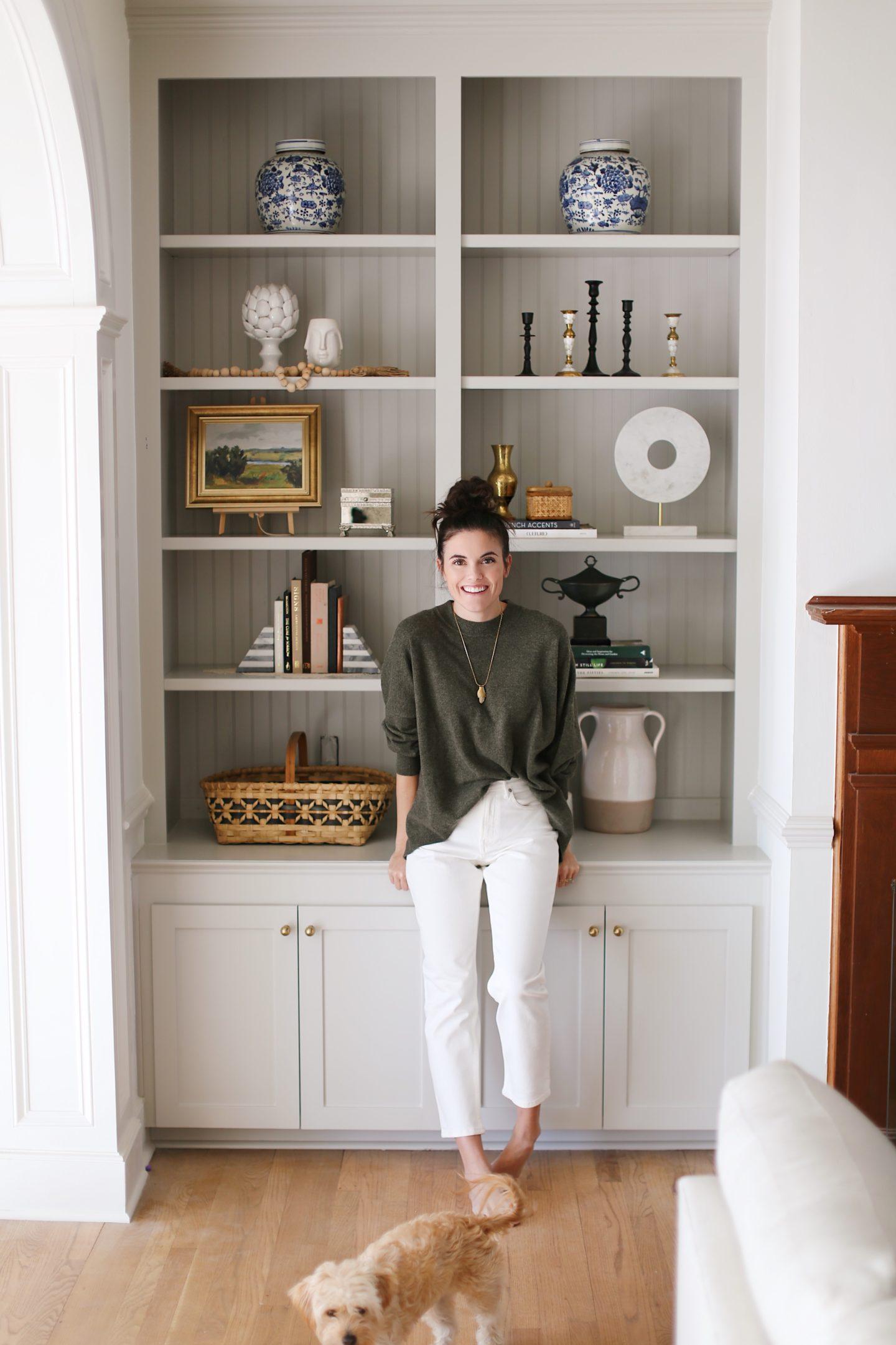
Open shelving allows you to blend functionality with an artistic touch in your home. By leaving your shelves exposed, you can showcase your favorite items—think of colorful dishware, curated books, or unique trinkets—transforming ordinary storage into an inviting display. To elevate the look, consider using decorative baskets for additional organization, and incorporate potted plants to bring a touch of nature indoors. Mixing and matching different materials, from rustic wood to sleek metal, adds texture and depth, creating a stunning focal point that reflects your personality.
Moreover, utilizing open shelving offers great versatility in design. You can rearrange items based on seasons, moods, or trends without the hassle of traditional cabinets. Here are some decorative elements you might consider adding to your shelves:
- Framed photos or artwork
- Seasonal decorations (like pumpkins for fall or ornaments for winter)
- Inspiration boards made from cork or magnetic strips
- Handmade pottery or artisanal pieces
Build a unique narrative by curating these accessories, and let each shelf tell a story. Open shelving is not just about storage; it’s an opportunity to highlight your individuality.
For more inspiration and tips on open shelving, visit Apartment Therapy.
Consider bold ceilings to add drama in your interior design project

If you’re looking to make a statement in your interior design, consider infusing character into your space with a striking ceiling. This often-overlooked area provides a unique opportunity to add visual interest and depth, transforming an ordinary room into a standout showcase. From vibrant colors to intricate textures, bold ceilings can create an inviting atmosphere and set the tone for the entire space. Imagine stepping into a room where the ceiling boasts a stunning shade of emerald green or is adorned with artistic patterns that draw the eye upward.
To achieve this dramatic effect, explore various approaches such as:
- Color Pop: Choose a bright hue that contrasts beautifully with the walls.
- Textured Finishes: Use materials like wood paneling or plaster to give the ceiling dimension.
- Architectural Features: Consider adding beams or coffered details for sophistication.
- Artwork: Install murals or painted designs that tell a story.
A bold ceiling doesn’t just lift your design; it inspires creativity and invites conversation. Whether you’re crafting a modern sanctuary or a rustic retreat, channeling energy upwards truly elevates any design project. For more inspiration, visit housebeautiful.com and discover how ceiling designs can redefine your living space.
Opt for sustainable materials to enhance eco-conscious interior design choices
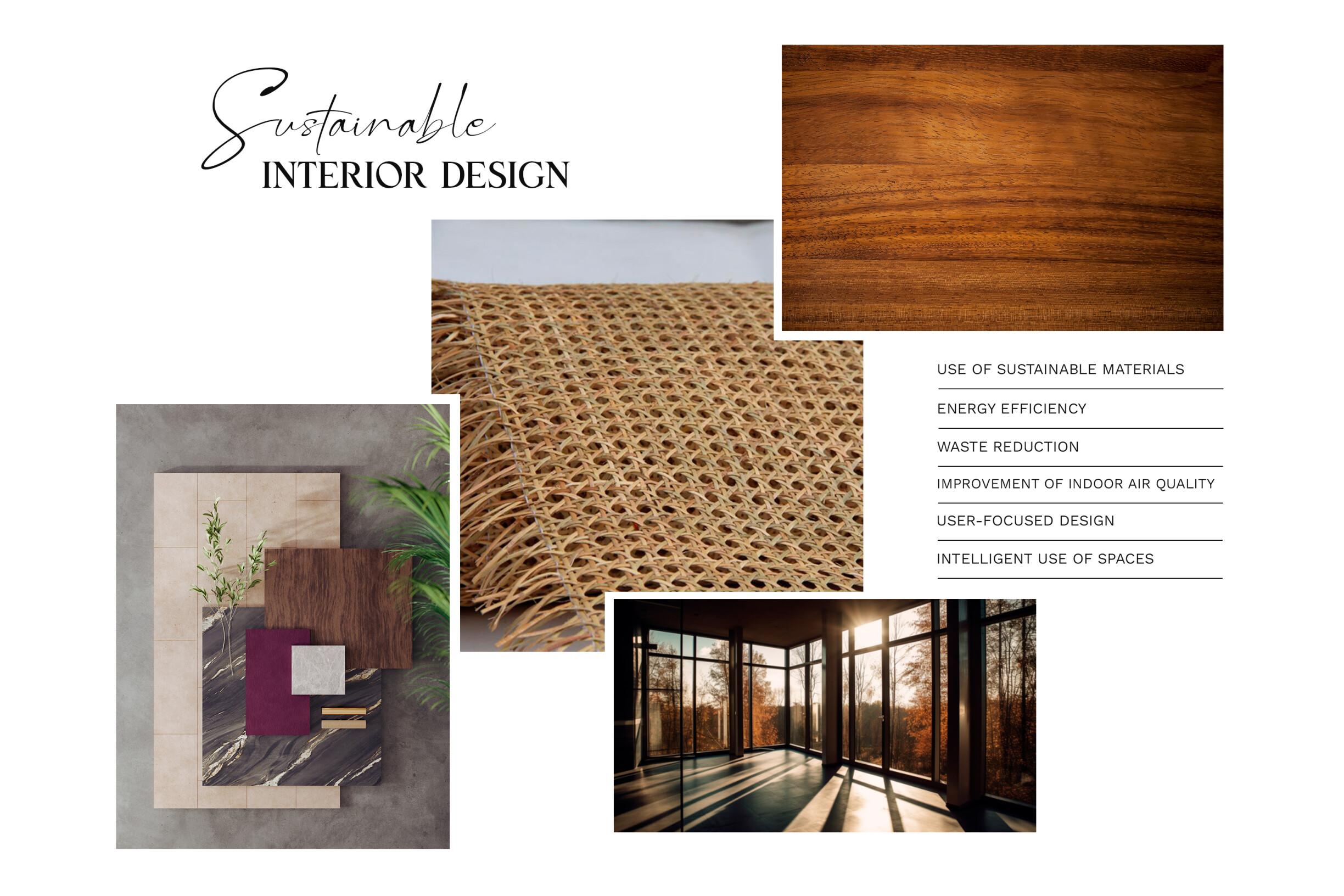
Embracing the beauty of nature in your home starts with choosing materials that reflect sustainability and environmental mindfulness. Incorporating bamboo, reclaimed wood, and organic cotton not only adds a unique charm to your space but also reduces your carbon footprint. Bamboo is a fast-growing grass that regenerates quickly, making it an excellent eco-friendly flooring option. Reclaimed wood offers character and history, transforming old structures into beautiful furniture and accents that tell a story. Opting for organic cotton fabrics for curtains and upholstery can enhance your home’s comfort while supporting sustainable farming practices.
To take your commitment to eco-conscious design a step further, consider integrating cork, hemp, and glass into your home. Cork is a renewable resource harvested from the bark of cork oak trees, perfect for flooring, wall surfaces, and even soundproofing. Hemp is another versatile option; its fibers can be used to create durable textiles and eco-friendly insulation materials. To add a contemporary flair, use recycled glass for light fixtures and decorative elements, ensuring that style and sustainability go hand in hand. By choosing these materials, your interior not only looks stunning but also aligns with a greener planet. For more insights on sustainable materials, check out treehugger.com.
Layer rugs for depth and warmth in your interior design
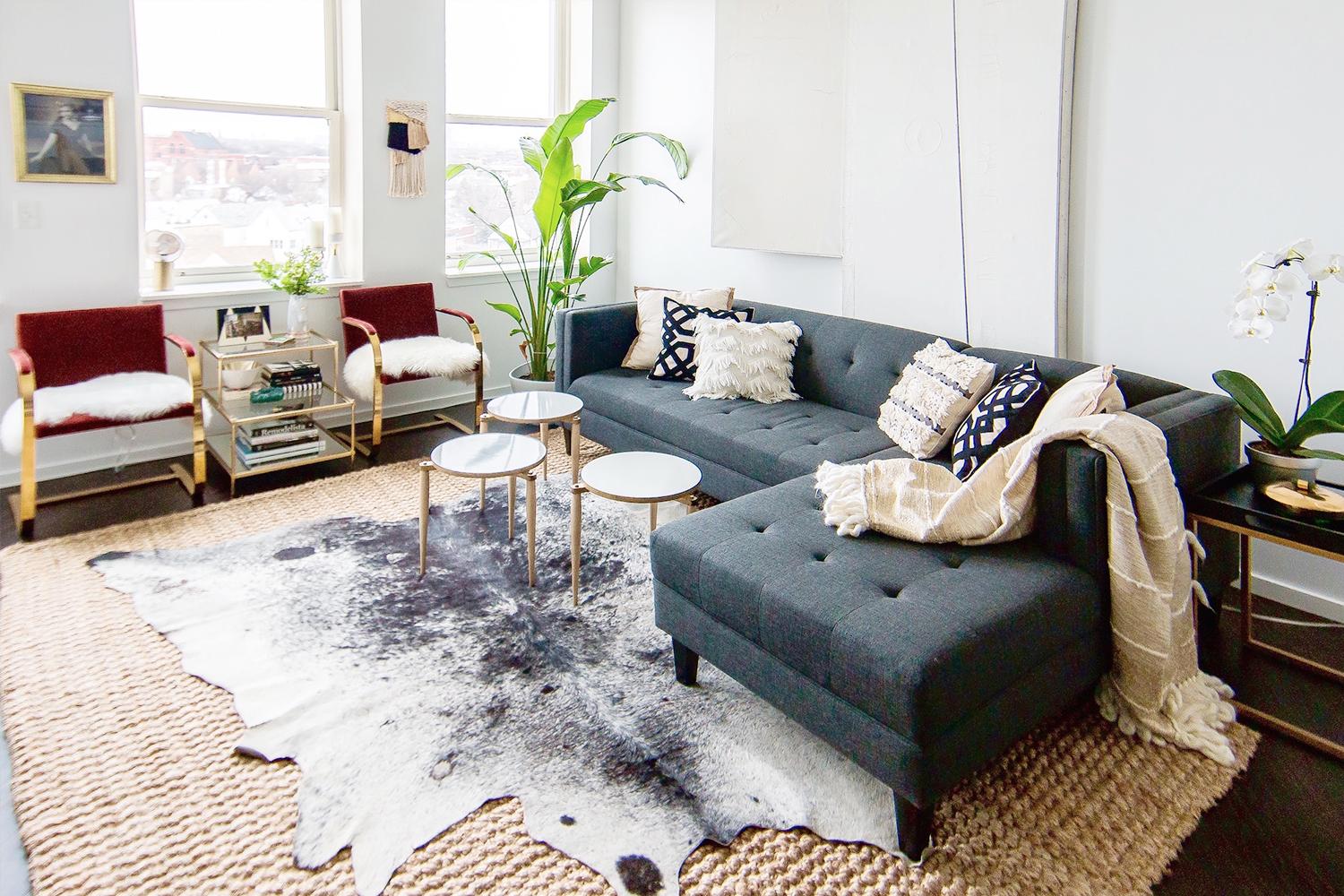
Layering rugs is a brilliant way to inject warmth and depth into your living spaces, creating a cozy ambiance while also showcasing your unique style. Consider starting with a large, neutral area rug as your foundation, which can anchor the room’s furnishings. Then, add a smaller, more vibrant or textured rug on top to create visual interest and contrast. This combination allows you to mix patterns, colors, and textures while making the space feel inviting. When choosing rugs, think about material variety—natural fibers like jute or wool can add richness, while synthetic options may lend a pop of color without breaking the bank.
To maximize the impact of your layered rugs, pay close attention to placement and scale. Ensure that the rugs overlap in a way that feels balanced; for example, position the smaller rug in a way that highlights a coffee table or a specific seating area. Incorporate a few accessories like cushions or throws that echo the colors in the rugs to strengthen the cohesive look. Don’t be afraid to explore various combinations and experiment with the layout until you create a distinctive nook that reflects your taste. Ready for more inspiration? Check out elledecor.com for a wealth of design ideas.
Create zones with area rugs to define spaces within interior design
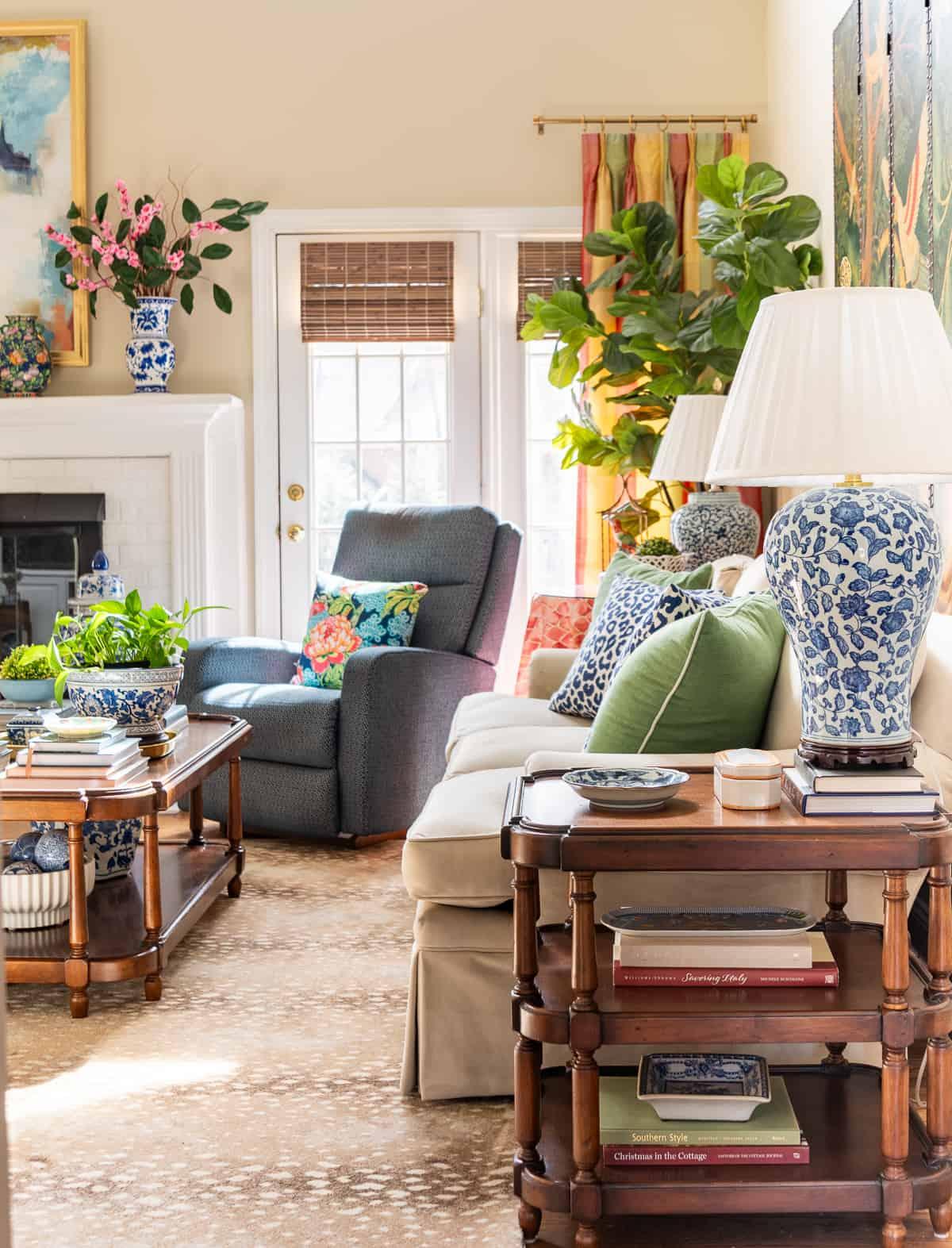
Incorporating area rugs into your interior design is a powerful method to delineate spaces while adding texture and warmth to your home. By selecting distinctive rugs that complement the furniture and color palette of each zone, you can strategically divide spaces without the need for physical barriers. Consider using a large, bold-patterned rug in a living area to anchor seating arrangements, while a more subdued or subtle option can create a cozy reading nook. When layering rugs, ensure that they share complementary colors or textures for a cohesive look that maintains the flow of the entire room.
Think about the functionality of each area when choosing your rugs. For example, a soft, plush rug can enhance a lounging area, making it inviting for gatherings, while a durable, low-pile option is ideal for high-traffic areas like entryways or kitchens. To further enhance your design, mix different shapes and sizes of rugs to create a more dynamic layout. Round rugs can soften angular furniture arrangements, whereas runner rugs can elegantly guide the eye down hallways. The right rug can be the unsung hero of your interior design, transforming even the simplest of spaces into a beautifully defined area that speaks to your style.
Use plants as living decor to elevate your interior design
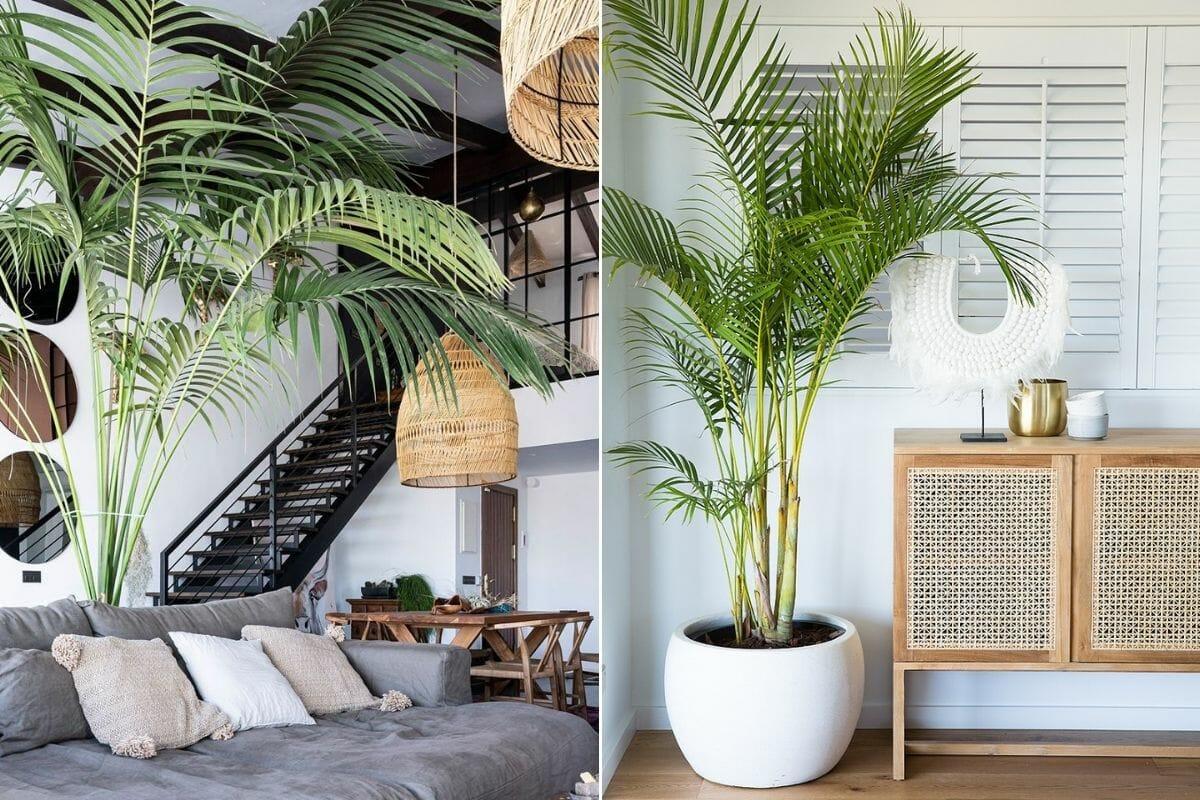
Integrating vibrant greenery into your indoor spaces offers an eye-catching and refreshing touch that can redefine your home’s ambiance. Succulents and fiddle leaf figs can effortlessly elevate any corner, adding character without overwhelming existing decor. Utilize hanging planters to introduce layers; think of trailing vines cascading from shelves or hooks. Additionally, floor plants like monsteras or rubber trees can create natural focal points in larger rooms, balancing design elements while purifying the air.
Consider creating a vertical garden as a stunning living wall feature that acts as both art and foliage. Using customizable frames, you can plant an array of herbs or vibrant floral species, perfect for kitchens or living areas. To enhance the experience, combine sensory elements—incorporate fragrant plants like lavender or rosemary to stimulate both sight and smell. For inspiration, check out a range of ideas on Apartment Therapy, where you’ll find tips on achieving the balance and style needed to make your indoor jungle thrive.
Incorporate personal mementos as unique accents in interior design
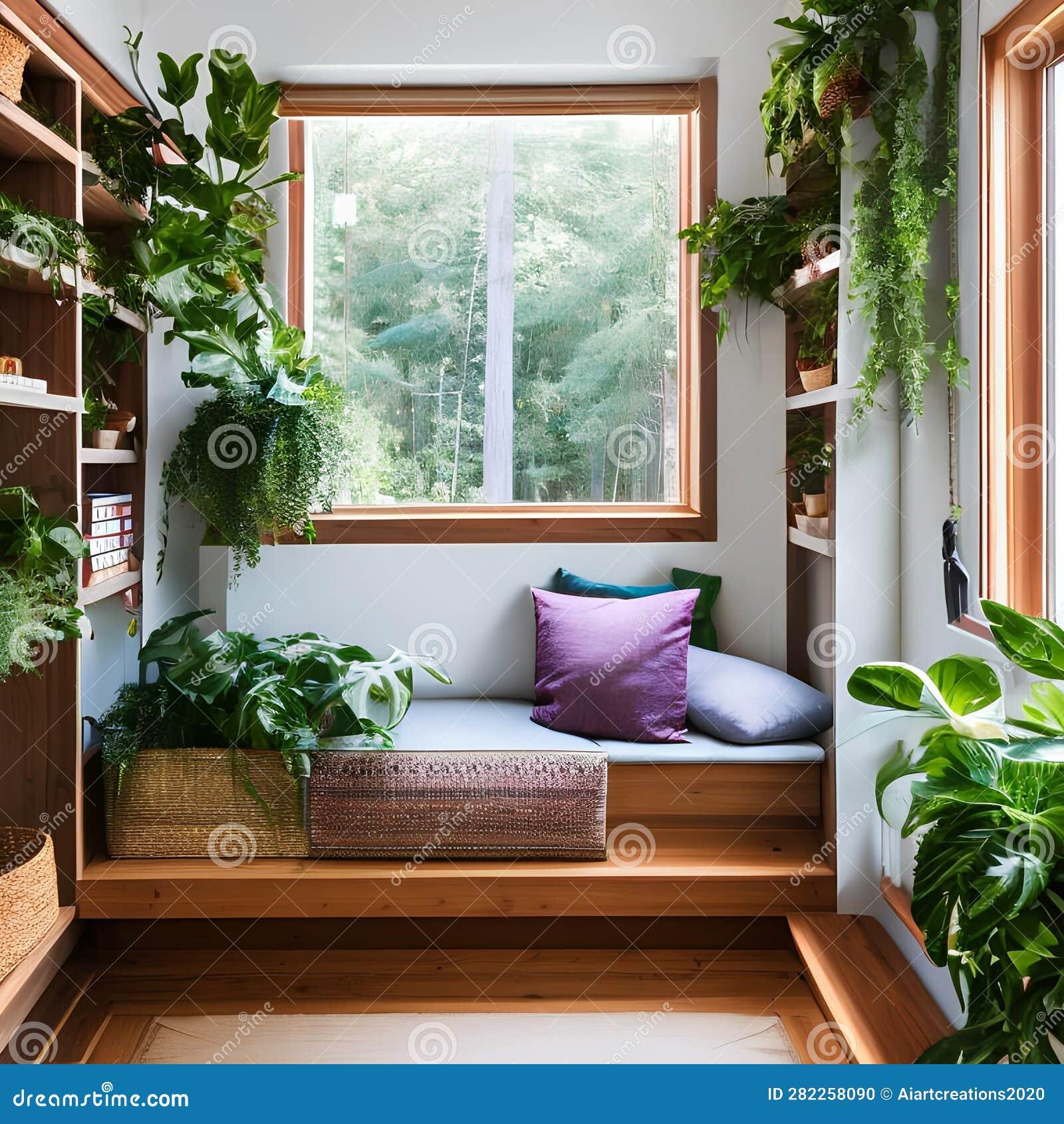
Bringing personal mementos into your home can create a warm, welcoming atmosphere that reflects your unique story. Consider displaying family heirlooms like antique clocks or vintage photographs in stylish frames. You can also incorporate travel souvenirs such as handcrafted artifacts or local artwork from your adventures. These pieces not only serve as conversation starters but also add depth and character to your space. Try grouping similar items together for a cohesive look, using bookshelves or display cabinets to showcase your collection. Remember, less can be more, so curate your items thoughtfully to avoid a cluttered appearance.
Another innovative way to embed your personal touch is through wall art created from your own experiences. Transform your favorite photographs into a stunning gallery wall that tells a story about your life’s journey. Use shadow boxes to create 3D displays of memorabilia like concert tickets or pieces from special events. Combining these elements can breathe life into an otherwise blank wall. To enhance the visual interest, consider varying frame styles and sizes—this haphazardly planned yet intentional approach adds an eclectic flair. Explore additional ideas for incorporating personal designs through resources like Architectural Digest.
Take advantage of small spaces with clever storage solutions in interior design
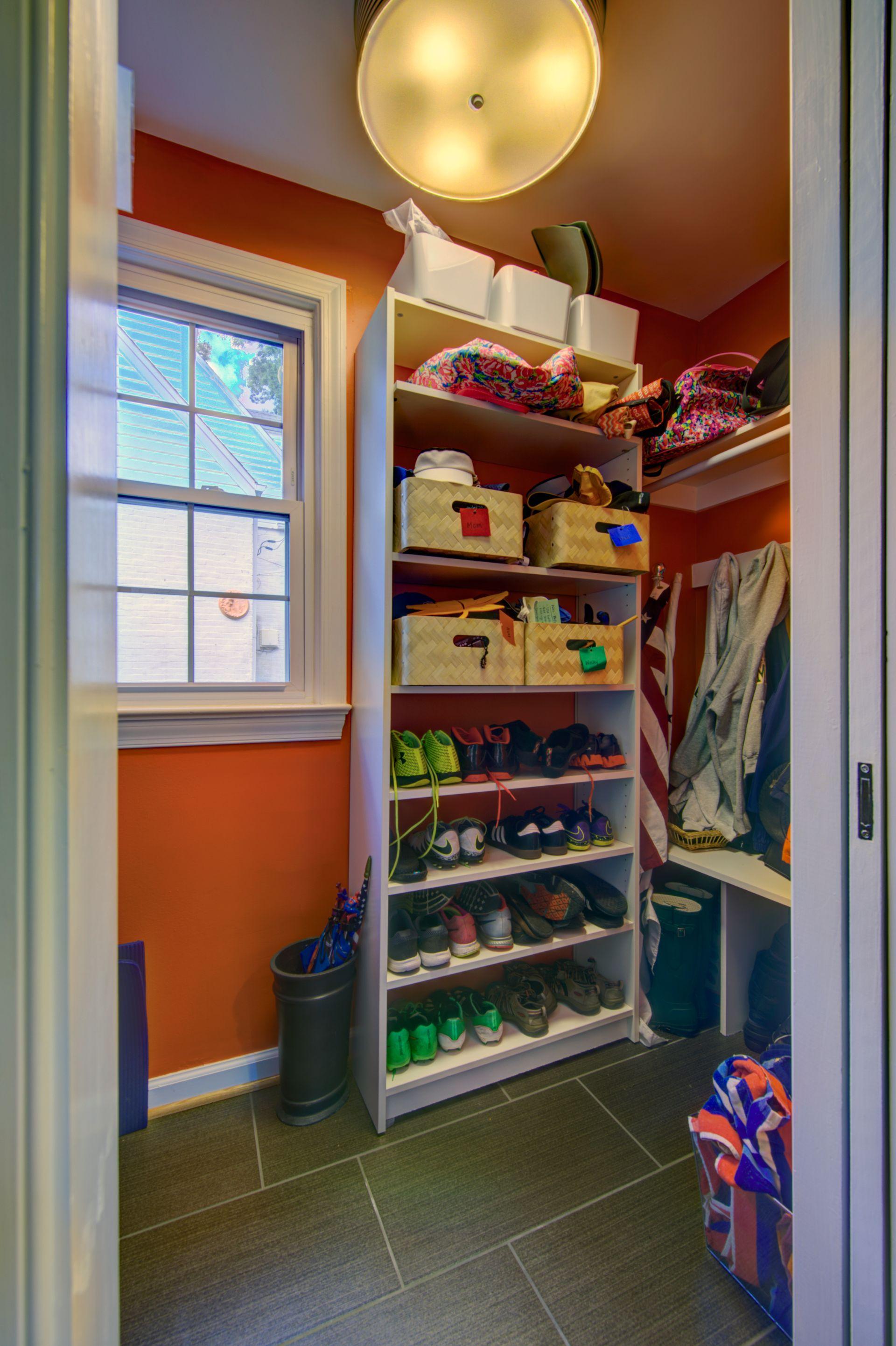
Transforming small spaces into functional havens requires creativity and clever storage solutions. One innovative approach is to integrate built-in shelving and cabinetry, which can provide a seamless look while maximizing vertical space. Consider using wall-mounted shelves above furniture to hold books, decorative items, or even plants, adding both style and storage without consuming precious floor space. Additionally, multipurpose furniture, such as ottomans or coffee tables with hidden compartments, can be lifesavers. These versatile pieces not only serve their primary function but also cleverly conceal items like blankets or toys, ensuring your space remains tidy.
Another effective tactic is to utilize the often-overlooked areas, like the space under the stairs or tall cabinets. Design custom drawers that fit snugly into these nooks or use decorative baskets for an aesthetically pleasing touch. Don’t forget to incorporate hooks and pegboards on walls for hanging items such as bags, hats, or even kitchen utensils. Floating cabinets can also be a game-changer; by lifting storage off the floor, they create an illusion of more space while keeping your essentials within reach. Applying these clever storage concepts can elevate even the tiniest areas, making them feel organized and spacious.
For more inspiration and tips on maximizing small spaces, you can visit Apartment Therapy.
Choose light, airy color schemes for a spacious interior design feel
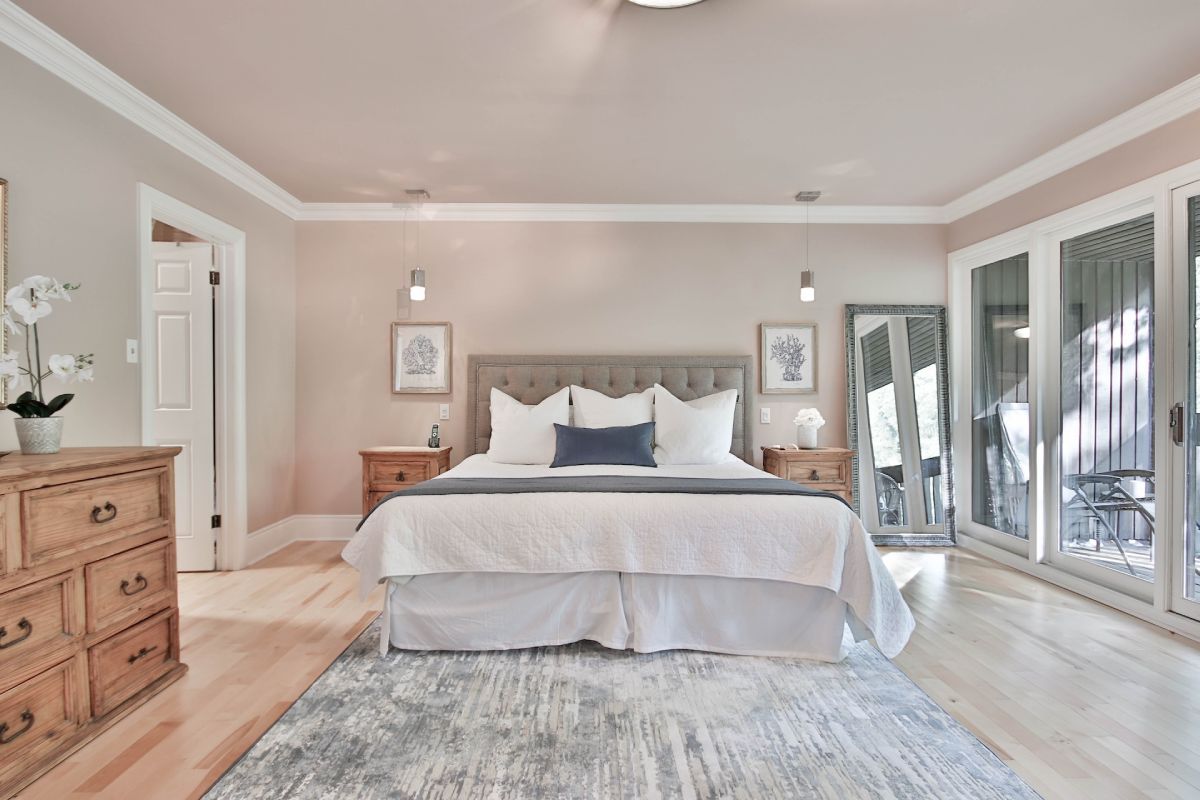
When transforming your space, the color palette you choose plays an integral role in how spacious and inviting an area feels. Soft whites, pale blues, and gentle pastels can evoke a sense of tranquility while giving the illusion of wider dimensions. Opting for these light hues, combined with natural light, can make even the coziest of rooms feel open and airy. To enhance this effect, consider incorporating reflective surfaces such as mirrors and glossy finishes, which can amplify the light and create a brighter atmosphere.
To further cultivate a fresh and breezy ambiance, balance your color scheme with subtle textures. Natural fabrics like linen, cotton, and jute can warm up a light palette without overwhelming it. Layering these textiles creates a harmonious look that feels both chic and comfortable. Adding splashes of greenery into the mix, through potted plants or botanical prints, can reinforce a connection with nature and energize the space. For an inspiring look at how colors can transform interiors, visit housebeautiful.com for more ideas.
Transform your space with movable partitions for versatile interior design
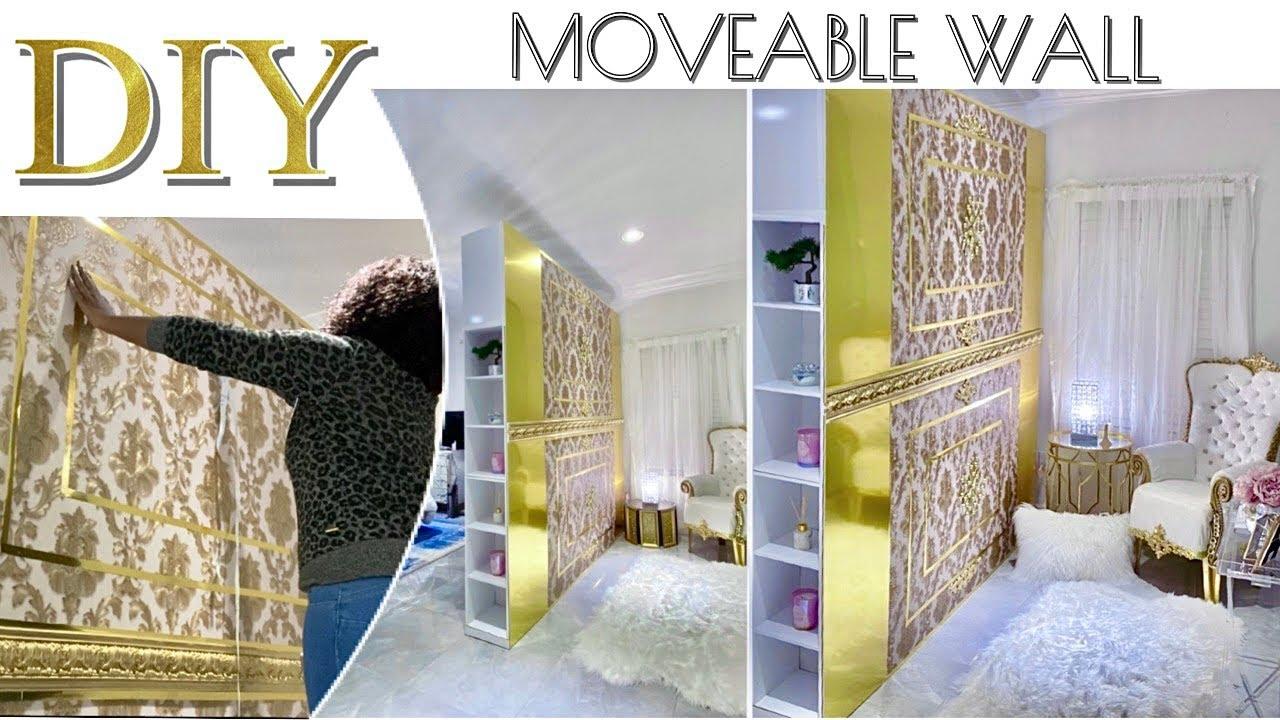
Movable partitions are a game changer for anyone looking to enhance the functionality and aesthetic appeal of their living or working space. With a variety of designs available, from sleek glass panels to warm wooden slats, these partitions allow you to define areas without sacrificing openness. Consider using:
- Folding screens for an easy-to-move option that can be stowed away when not in use.
- Sliding panels that glide effortlessly along a track, seamlessly opening up or dividing spaces.
- Biophilic designs incorporating live plants, which not only partition but also improve air quality and ambiance.
In addition to their aesthetic versatility, movable partitions contribute to creating multifunctional spaces. For instance, you can transform an expansive area into a cozy reading nook or a formal meeting space simply by adjusting your partitions. Explore options like:
- Magnetic whiteboards that double as a canvas for brainstorming sessions, while also offering a dynamic partition.
- Soundproof room dividers that not only maintain privacy but also reduce noise, ideal for home offices or entertainment spaces.
- Transparent acrylic panels that allow light to flow freely while still providing a visual barrier.
For more inspiration on how to incorporate movable partitions into your design, check out Architectural Digest.
Infuse your personality into the interior design through curated collections

Creating a space that reflects your unique personality can transform the mood and functionality of your home. To make this happen, consider showcasing curated collections that resonate with your interests and experiences. Collect items such as vintage books, art pieces, or travel mementos to create focal points throughout your living space. For example, a well-defined book nook with a mix of hardcover titles and stylish bookends can serve not only as décor but also as a conversation starter for guests. By mixing colors, textures, and sizes, you can curate an eye-catching display that embodies your personal style.
Each curated collection can tell a story or evoke cherished memories, making your home truly yours. Consider dedicating surfaces like shelves, coffee tables, or mantels to these collections, and arrange them in groupings that feel intentional yet effortless. Adding elements like framed photographs, handmade ceramics, or curated wall art creates layers of depth and interest. Aim for a cohesive palette or theme that ties your different collections together, whether it’s through color, material, or subject matter. If you’re searching for inspiration or tips on displaying your collections, sites like Apartment Therapy offer extensive resources and ideas.
Consider acoustic panels for both style and sound control in interior design
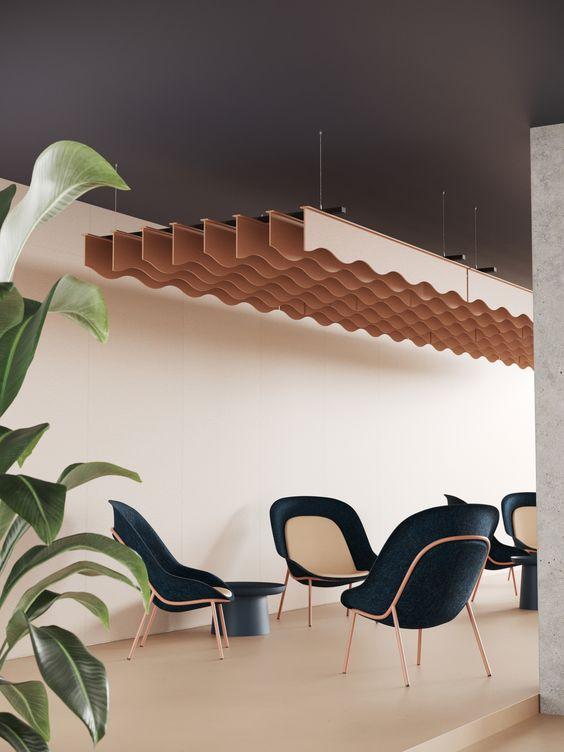
Incorporating acoustic panels into your interior design not only enhances sound quality but also adds a striking visual element to your space. These panels come in a variety of textures, colors, and patterns, allowing you to customize the aesthetic appeal of your room while simultaneously managing noise levels. Depending on your design theme—be it modern, rustic, or eclectic—you can choose panels that complement or boldly contrast with your existing decor. Hang them as artwork, place them in clusters, or even integrate them into furniture designs to create a unique focal point. This approach not only enriches the auditory experience within a room but elevates the overall ambiance and style.
When selecting acoustic panels, consider materials that resonate with your personal taste. Fabric-wrapped panels, for example, offer soft textures that can seamlessly blend into a cozy living room, while wooden slat designs introduce a more contemporary edge. Moreover, you can opt for DIY panels that reflect your creativity. For an even more immersive experience, combine your acoustic panels with decorative lighting to enhance their visual impact. Incorporating these sound-absorbing elements can significantly reduce echoes and improve sound clarity, making your space more enjoyable for everyone—whether it’s for quiet gatherings or lively celebrations. For more ideas on integrating acoustic solutions into your design, visit acoustics.com.
Key Takeaways
As we wrap up our exploration of 24 innovative interior design ideas, it becomes clear that transforming your space is only limited by your imagination. From bold color palettes that capture attention to clever multifunctional furniture that maximizes utility, each concept offers a pathway to create an environment that reflects your unique style and enhances your everyday life.
Remember, interior design is not just about aesthetics; it’s about crafting an atmosphere that feels like home. Whether you’re looking to make a dramatic change or simply freshen up a room, these ideas serve as a springboard for your creativity. So, roll up your sleeves, embrace your inner designer, and let your space tell your story. After all, a well-curated environment not only beautifies your surroundings but can also elevate your mood and inspire those who enter. Happy designing!
 Garden and patio decoration inspiration
Garden and patio decoration inspiration




